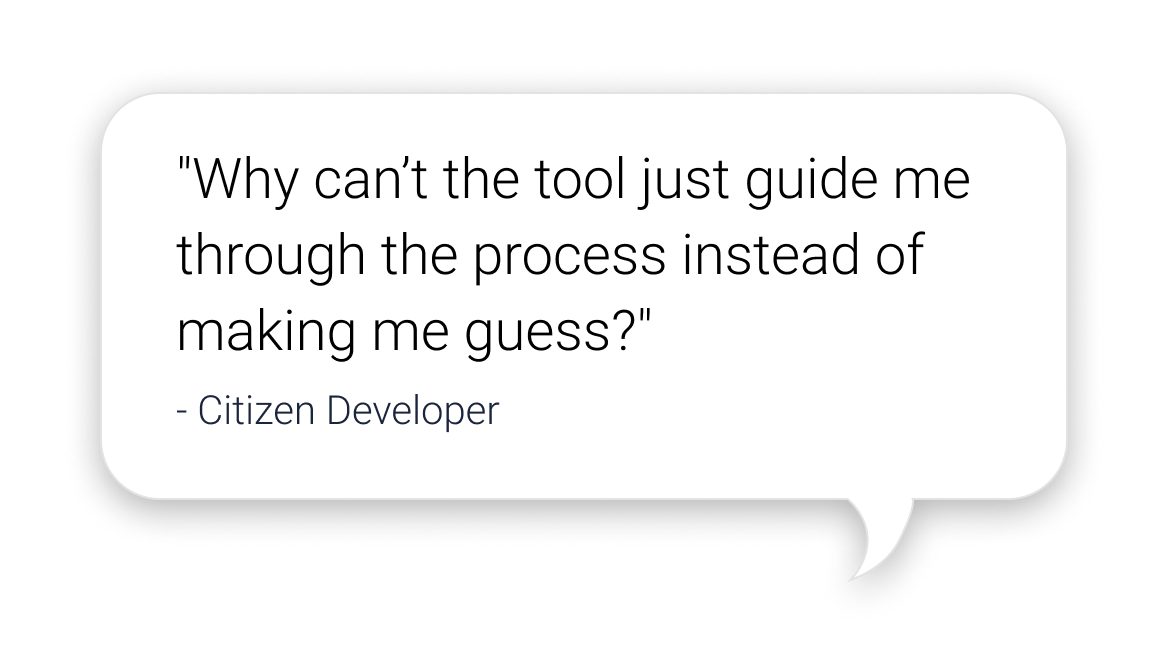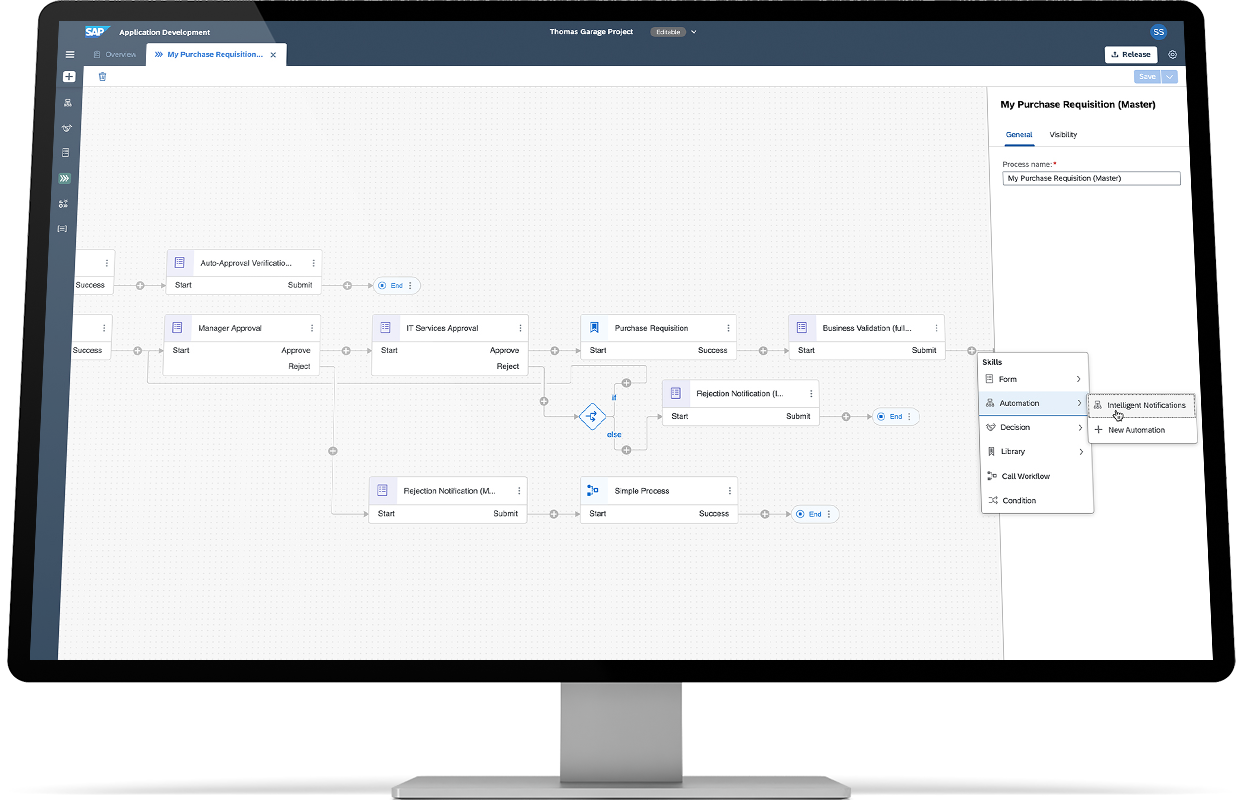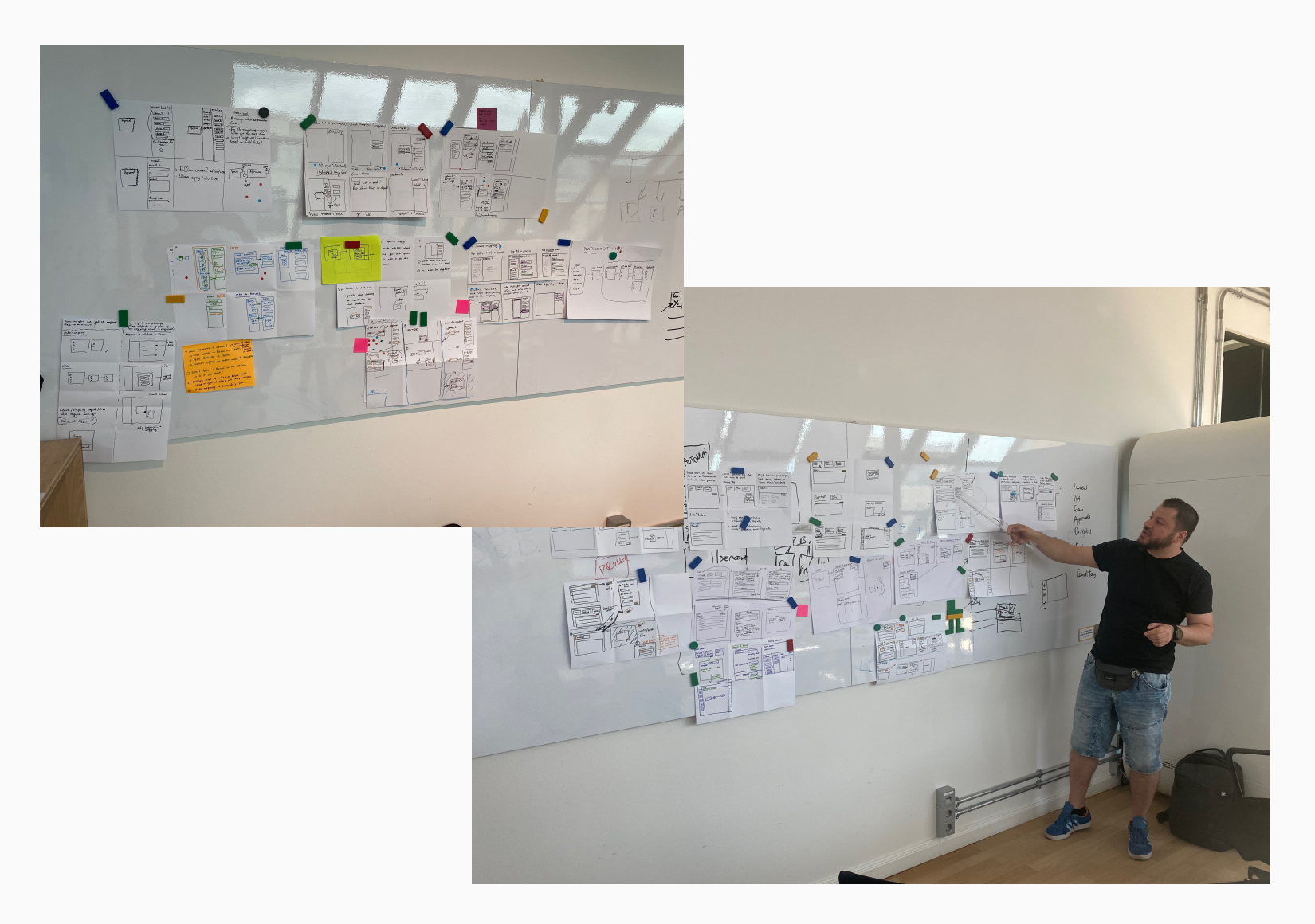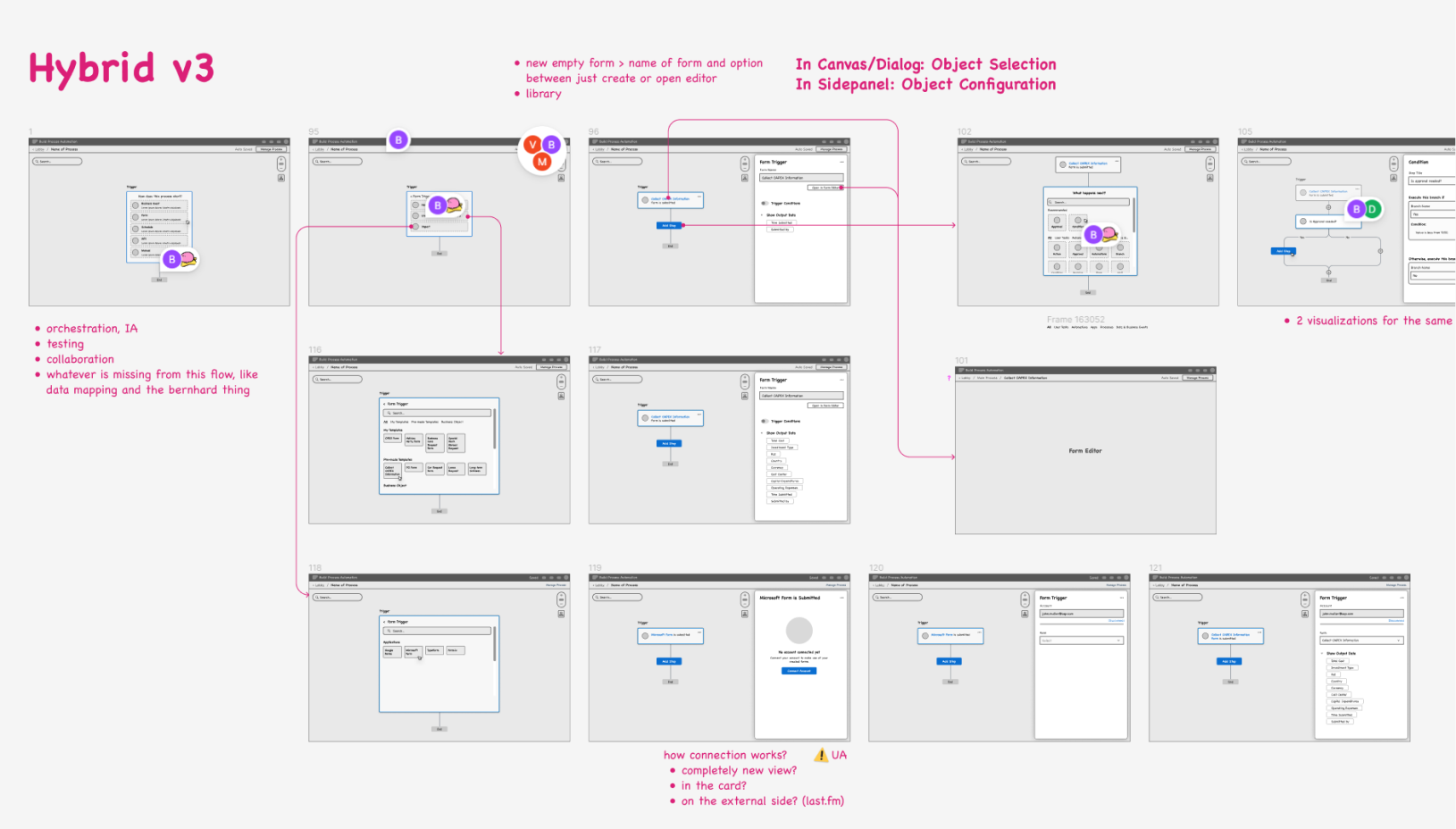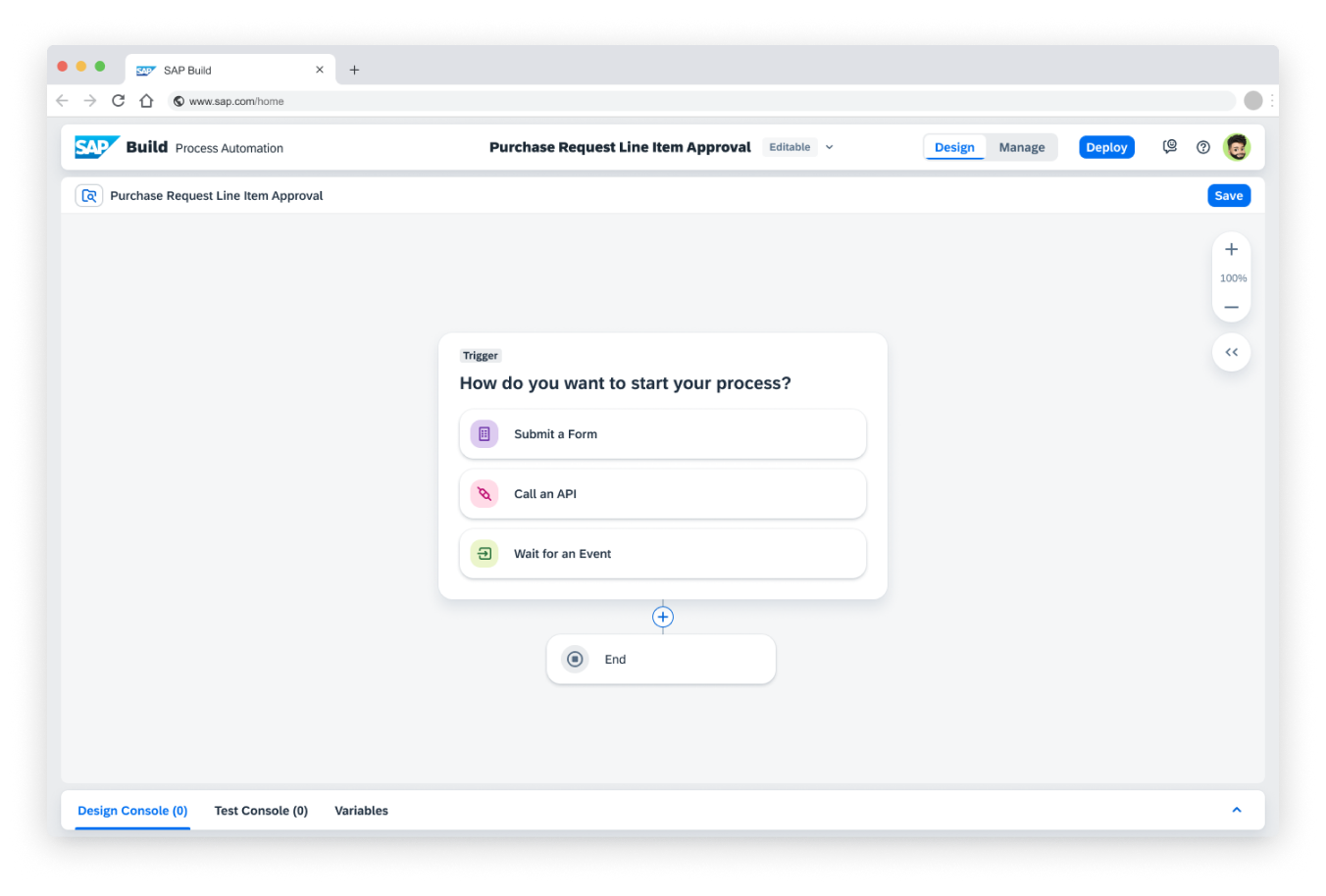Redesigning process modeling for efficiency and adoption ⸺
UX
Redesign
User Testing
SUS +20
Problem Statement: Our target users — business professionals and citizen developers — struggled with process modeling in our tool. It was complex, error-prone, and required guessing steps instead of being guided, making adoption difficult.
Business Needs: High support ticket volumes showed that users were struggling with the existing tool. To reduce support costs and remain competitive, we needed a simpler, more intuitive modeling experience that lowered the learning curve and improved usability.
My Role: Alongside a colleague, I led UX strategy and facilitation across design, product, and engineering. Guided research, prototyping, and validation that delivered a SUS improvement of +20 points.
Timeline: 8 months

